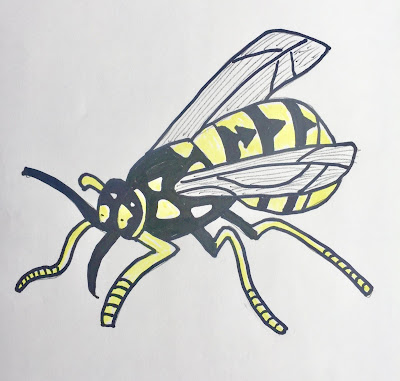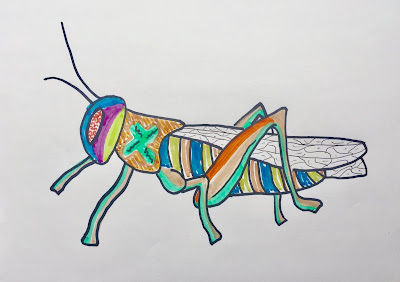Dear George,
Love and death. My teacher said these are poets’ two favorite topics. I’ve tried writing about love, but it’s too sticky and I’ve been more enthusiastic about death. Now with the pandemic raging, my obsession seems even more pertinent. I actually don’t expect to fall prey to the coronavirus, but I will probably expire from something or other in the not-distant-enough future. Some think that death is an unnerving matter, but, looking these poems over, I find it’s not as bad as they say.
Love,
Dave
Death on the Front Lawn
I happened upon death when I was just four
Lying flat on our lawn, a dead crow
My sitter informed me I too would be dead
Much more than a small kid should know
Then I was eight and in the third grade
Mr. Elmquist, our crossing guard, died
We stared at his corpse at the funeral home
Couldn’t wake him as hard as we tried
I asked my dad, “What happens when we die?”
He explained that they don’t know for sure
Skipper told me I’d get eaten by worms
And then I’d turn into manure
Frankie said no, you’ll float up to Heaven
Dead ancestors will wait there to greet you
That could be exciting, it could be bad
I did have this aunt who’d mistreat you
I never believed in an afterlife
We’re like bugs, we just die and that’s that
Though my mother imagined us all together
Four kids, her husband, her cat
Death, in my mind, is not like a party
Nor is it a trip to Cancun
It’s probably more like an empty black hole
Or an unending Philip Glass tune
My demise gets more ominous the older I get
Some days it seems right around the corner
The funeral is actually what bothers me most
Embarrassing when I don’t have a mourner
And it’s not even death by itself that’s so bad
It’s the dying that’s the real bummer
Sometimes it’s quick and sometimes it’s slow
My advice, don’t take the whole summer
In truth, you get perks for being dead
You are done with the shots and the pills
No chance you’ll get stuck in a traffic jam
And Visa stops sending their bills
A whole lot more could be said about death
Like pandemics and nuclear war
But I think I will look on the bright side
Make a list of life’s pleasures galore
* * *
Touring the Hereafter
Our Triple-A branch, I was pleased to learn,
Offers tours of Heaven and Hell
Since one day soon I’ll be ashes in an urn
I thought I’d see which rings my bell
Heaven throughout is a pristine place
Cozy cottages with white picket fences
Adults wear gowns that are trimmed in fine lace
Best of all, there’s no charge for expenses
The first day in Heaven one is given their harp
Lawrence Welk composed all of the tunes
Cous-cous and kale at six p.m. sharp
For breakfast, poached eggs and dried prunes
All the radios in Heaven play NPR
People meditate and then do Tai Chi
Ambrosial melodies float from afar
Tiny toddlers take naps on your knee
I wrapped up my tour, Hell was soon my next stop
The dwellings, less comfy, I’d say
Residents eat Big Macs, drink sugary pop
Then torture newcomers all day
Most inmates of Hell play poker at night
And do other stuff we’d call risky
Write poems that usually are boring or trite
While besot with too much Irish whiskey
All the TVs in Hell are set to play porn
Strangers dance the Charleston while nude
I didn’t see a demon who looked forlorn
It’s hard to be glum when you’re lewd
Now I’m having trouble making up my mind
Of course Heaven can be seamlessly nice
But Hell, I found out, is unfairly maligned
It’s hard to pass by such fine vice
* * *
* * *
The Pearly Gates
I dreamt I was standing at the Pearly Gates
So many in line, the longest wait
Tens of thousands arrive every hour
Such a chore to decide each one’s fate
I wasn’t quite sure of procedures
But from everything I could tell
St. Peter inspects you and he decides
If you’re headed for Heaven or Hell
When I got to the gate I pressed the buzzer
Beaming angels welcomed me in
They gave me a ten-page form on which
To list all my good deeds and sin
I ran into trouble with the Good Deeds part
Even though I scanned all of my life
I take out the garbage on Monday nights
But the big stuff I leave to my wife
I had more success when I got to Part Two
A list of my sins filled twelve pages
I teased and tortured my brother for years
And told naughty lies at all ages
St. Peter arrived as I finished page twelve
I would say that he stands six feet two
With a long white beard, a halo, a robe
And a frilly bedraggled hairdo
I watched St. Peter as he scoured my list
Each page led to more of a frown
He looked toward the sky and he shook his head
My heart stopped as he pointed straight down
Your score, said St. Peter, is a minus ten
But for Heaven you need a plus six
He led me to an elevator next to the door
Pressed the button for the River Styx
As the elevator dropped, I woke from my dream
Relieved that I still have some time
I’ll start my good deeds in a week or two
And be sure to record each in rhyme
* * *
Crossing the Styx
The moment my funeral came to its end
I awoke on the bank of the underground river
Bleary-eyed, disoriented, I knew immediately
the River Styx, the notorious river of hate
The passageway from Earth to the Underworld
A journey I always knew I would pursue one day
Charon, the ancient boatman, stretched out his gnarled hand
Yellowed skin, brown-stained teeth, an unkempt beard
An emaciated man, filthy, with blazing dark eyes
The very image of Death himself
Repelled though I was, I handed the boatman the silver coin
that my spouse had carefully tucked in my vest
Charon nodded, beckoned me to join my fellow travelers
Three old men, a young mother, a newborn babe
Strangers all but comrades on our final journey
The Styx was black as coal, bitterly cold
Putrid odors seeped from its surface
A toxic mix that singed my nostrils
My eyes were drawn to the river’s flotsam
Bloated corpses of vengeful sinners
bobbing along, limbs akimbo
grotesque grins etched into their faces
Along the riverbank we spotted hundreds of Wraiths
wretched spirits who couldn’t afford Charon’s fee
destined to wander for a hundred years
I felt sympathy for the lost souls but also relief
We heard Cerberus before we could see him
Thunderous roars echoing throughout the valley
His form slowly emerged from the mist
and a shudder ran down my spine
A gigantic three-headed dog
snakes bristling around his neck
eels bulging from his torso
Razor-like claws, matted fur, the tail of a dragon
Snarling, prowling, circling, growling
Guarding the river’s edge, barring the dead
from any hope of return to Earth
Charon’s boat bumped against the shore
The fog so thick, my eyes were squinting
Small fires flickered here and there, a bitter smoke smell
Undulating screams and cries from all directions
Naked adults roamed aimlessly
Children curled into fetal positions
sobbing and wailing for lost mothers
Milling about in the meadow
the Gorgons, the Centaurs, the Harpies
No scene in my past life on earth had been this compelling
I stepped ashore from the boat, my curiosity peaking
A tinge of excitement in anticipation of this new world































































































































































































